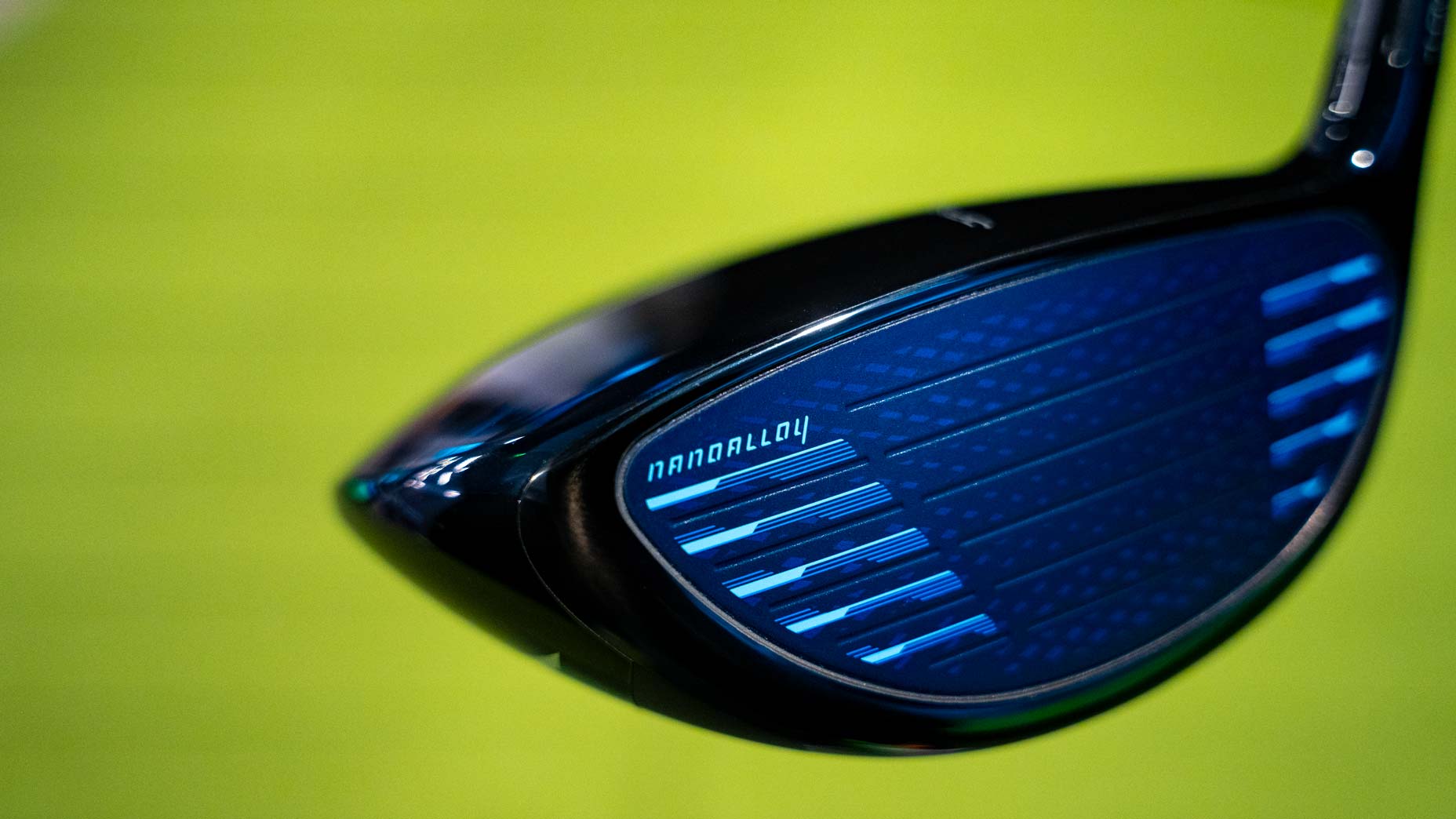 Mizuno launches JPX One woods with world’s first ‘Nanoalloy’ driver face
Mizuno launches JPX One woods with world’s first ‘Nanoalloy’ driver face
FIRST LOOK: The lowdown on Cobra Golf’s King Speedzone drivers

Cobra Golf unveiled its 2020 King Speedzone driver on Tuesday. Below is a detailed rundown on the technology behind what is sure to be one of the most talked-about designs in the equipment industry.
Stretching the limits: Two years ago, Cobra shook up the equipment space by CNC milling the entire face insert. Removing the human element from a part of the process that remains inexact, to some extent, added precision and efficiency to Cobra’s driver design.
If a CNC milled insert is good, Cobra believes a version that expands beyond the face is even better. The latest version offers 95 percent more face milling and now wraps into the toe and heel section of the head. The benefit of removing unwanted titanium is twofold — increasing discretionary weight and enlarging the sweet spot for faster ball speeds.
“If we were sitting on a trampoline that had a radius of just two feet, you’d only have a small area where you could get maximum bounce,” said Jose Miraflor, Cobra’s VP of marketing. “By essentially making the trampoline larger, we’re taking control of those springs, so to speak, on the outside of the material and managing them to a whole new level.”
Flex on ’em: A pair of internal CT pads — top section near the crown and bottom next to the face-sole — aren’t visible, but they serve an important role, reducing the amount of head twisting on off-center hits. In other words, the design minimizes the loss of ball speed of misses, something every recreational golfer can appreciate.
“If you can control the thickness of the pads, you can control the thickness of flexing in that area. Controlling the flection of those areas improves speed. We’re able to manage those areas in a strong area to give you more hot spots on the entire face,” said Miraflor.

Need for speed: If you were to remove the carbon fiber sections (more on that in a minute) from the heel and toe of the head, you’d find a T-Bar Speed Chassis with a titanium strip running down the center of the crown that connects the front and back. Cobra’s VP of R&D, Tom Olsavsky, confirmed the structure, while uncommon, remains up to the task of withstanding high-speed collisions from the likes of Rickie Fowler, Bryson DeChambeau and Lexi Thompson.
The removal of sturdy titanium netted a discretionary weight savings of 25 grams that was redistributed low in the head to improve forgiveness and launch characteristics. Fifty percent of the head is now made from lightweight carbon fiber, thanks to two large caps that cover a large portion of the crown and sole in the heel and toe.
Tripped out: You’ll notice the polymer trips once featured on the King F8 and F9 drivers are noticeably absent from the Speedzone design. The CNC milling on the leading edge of the crown is supposed to serve a similar purpose, reducing drag during the swing. Some golfers might also view the milling lines as an alignment aid at address.
Working in conjunction with the milled section on the crown is an aerodynamic head shape with a low center of gravity that enhances drag reduction and boosts overall clubhead speed.
More beef: Most of the weight savings from the head was relocated to a 69-gram internal weight positioned at the back of the sole. The design pushes the center of gravity down and away from the strike area while boosting the overall stability of the head.
Along with increasing the weight found in the back section of the head, a pair of moveable sole weights can be found in the standard Speedzone head. A 14-gram (red) and 2-gram (black) weight alter launch and spin properties depending on where they are positioned. When the heavier 14-gram weight is in the forward position, launch and spin are reduced. Both rise (along with forgiveness) when the weight is moved to the back location.
ADVERTISEMENT

Two options: The 460cc Speedzone caters to the player who prefers a pear-shaped profile and wider range of adjustable options. The 458cc Speedzone Xtreme version is slightly longer front to back and only features one weight positioned in the back of the head — giving it a higher moment of inertia for the golfer who’s looking for ball speed and reduced workability.
Both drivers come with Cobra’s MyFly adjustable hosel that allows players to increase or decrease the stated loft on the head by as much as 1.5 degrees. An Arccos-powered sensor, called Cobra Connect, can be found in the butt end of the grip and connects to a smartphone app to track performance (distance, location).
Matte finish and Tour specs: Not all golfers enjoy staring down at a high-gloss crown. With that in mind, a matte-black version should appeal to those who are looking for something to reduce glare.
Inspired by Rickie Fowler, both the 9- and 10.5-degree heads will also be available in two lengths (44.5 and 45.5 inches). The 44.5-inch “Tour Length” offering was inspired by Rickie Fowler’s 43.50-inch driver and should deliver a tighter dispersion without sacrificing too much in the distance department.
Pricing: Cobra’s King Speedzone (Jan. 17 release) retails for $450 and comes in three lofts (9, 10.5 and 12 degrees). UST’s Helium (high-launch/mid-spin), Mitsubishi’s Tensei CK AV Blue 65 (mid-launch/low spin) and Aldila’s Rogue Silver 60 (low-launch/spin) are the standard shaft offerings. More than 20 no-charge premium shafts are also available through custom.
ADVERTISEMENT





